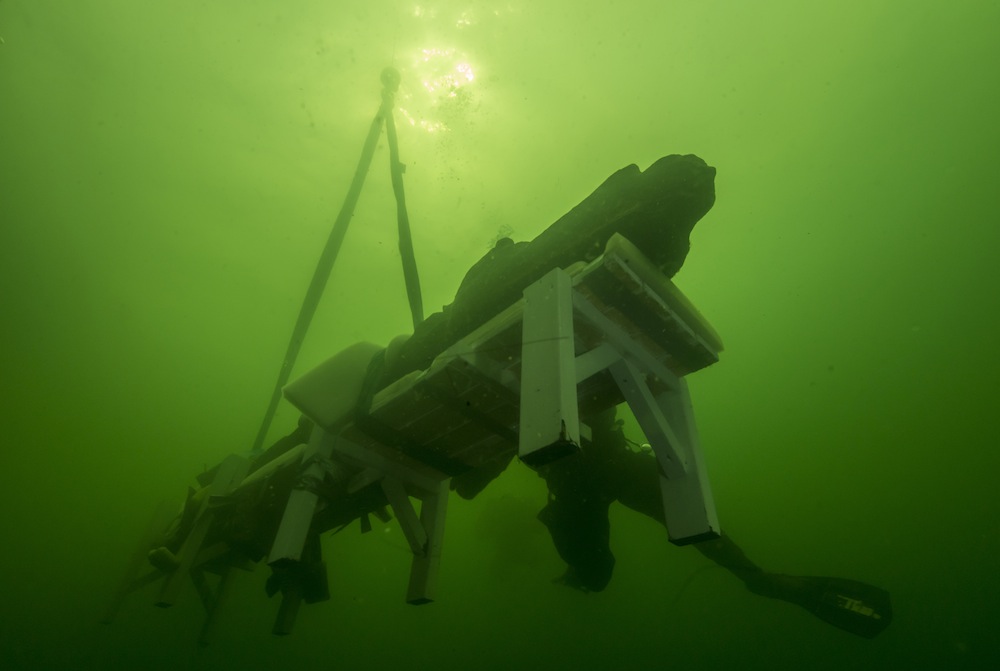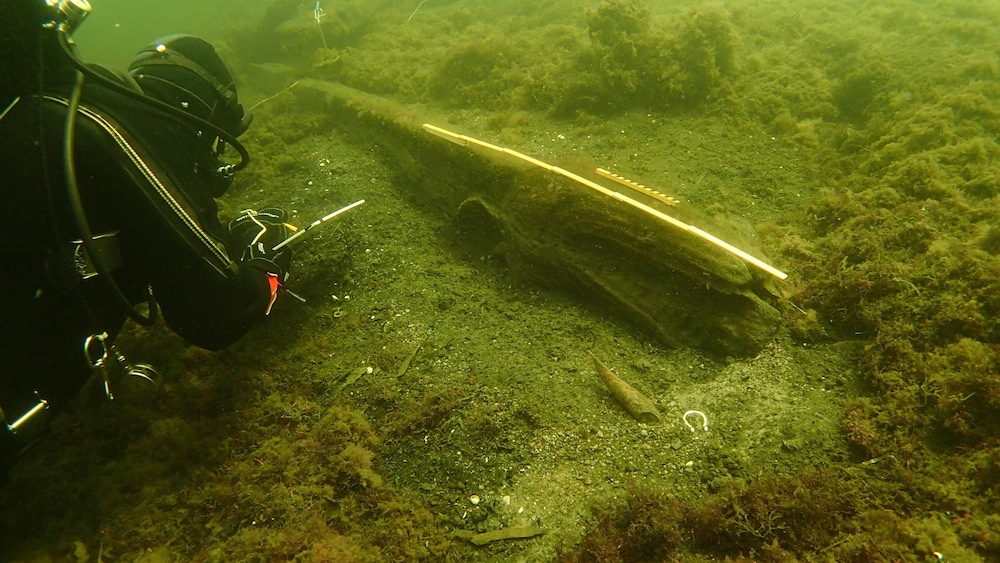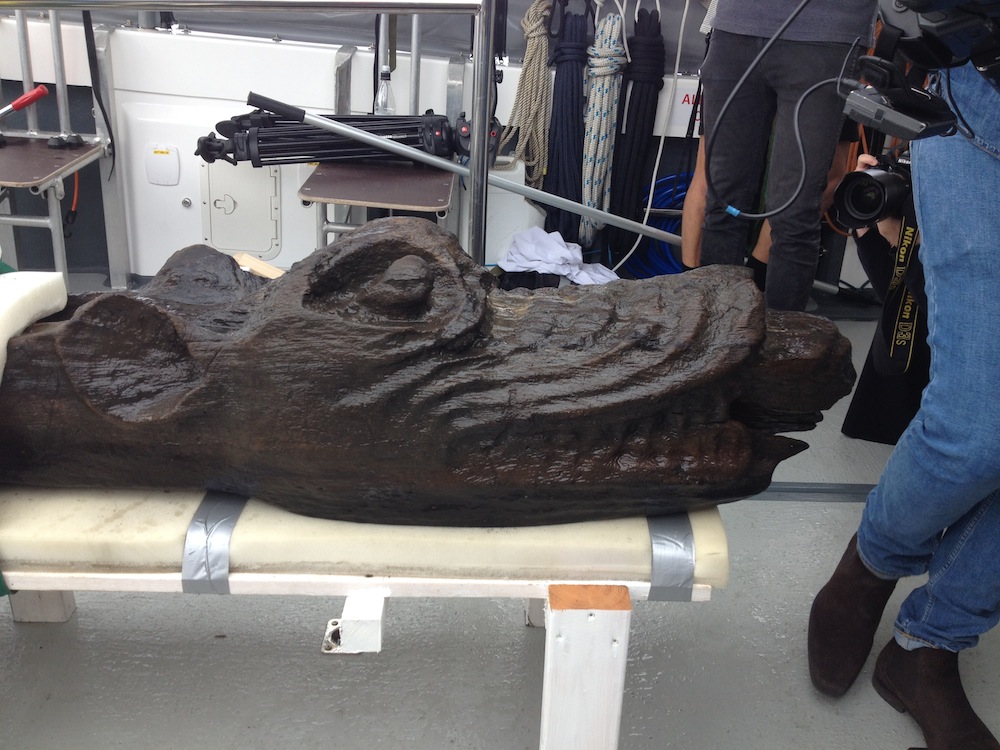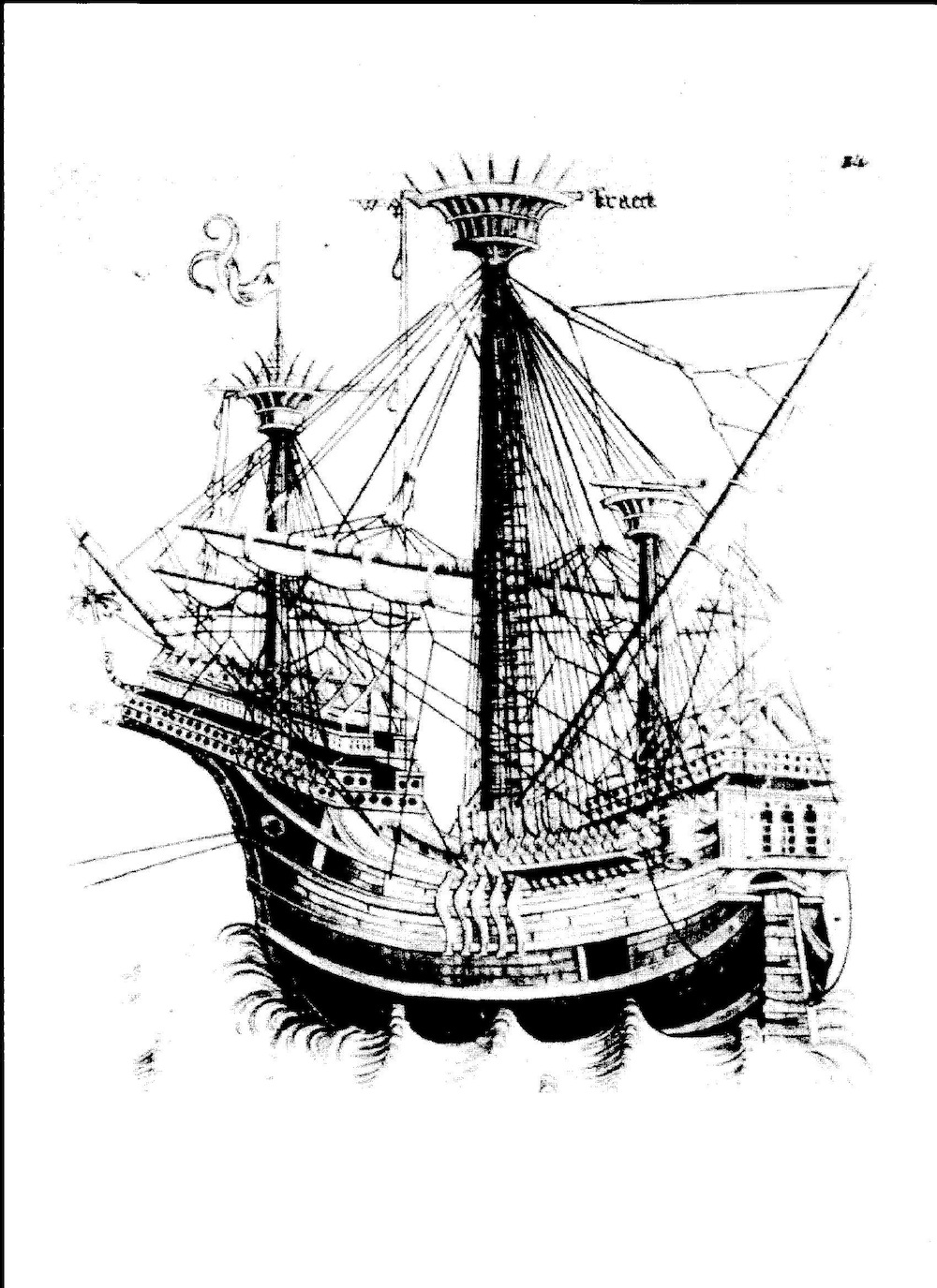Earlier this month, scientists unearthed the monstrous figurehead from a more than 500-year old ship that sank in the Baltic Sea. The figurehead, which shows a fantastical creature similar to a crocodile or a dog, was fixed atop the Gribshunden, a vessel that caught fire and sank in 1495 [Read the full story on the Gribshunden figurehead]
Rough patch
The Gribshunden was the flagship in the Danish King Hans' fleet. In 1495, the king was making his way to Kalmar in what is now Sweden, when he briefly left the ship to conduct business at the port at Ronneby. While he was away, the ship burst into flames and sank, with many killed. Here, an image of a ship that dates to roughly the same time period, which was taken from a church in the region. (Photo credit: Foto Ingemar Lundgren, Ocean Discovery)
Diving discovery
In the 1970s, divers discovered the wreck, but because there are about 1,000 wrecks dotting the coast in this region, it wasn't difficult to identify the ship. Here, a view of the ship's figurehead. on a platform, being lifted out of the water. (Photo credit: Foto Ingemar Lundgren, Ocean Discovery)
The Grip dog
It wasn't until 2013, when scientists analyzed the tree rings from the ship's timbers that researchers could identify the ship. They found that the trees that made the ship were felled between 1482 and 1483. When they looked in the historical record, they found a ship known as the Gribshunden, or "Grip Dog," sank in 1495 and matched the ships description. Here, another view of the figurehead as it is hoisted out of the ocean depths. (Photo credit: Foto Ingemar Lundgren, Ocean Discovery)
Get the world’s most fascinating discoveries delivered straight to your inbox.
Mystery creature
The figurehead, shows a fantasy creature, with both leonine and crocodilian in appearance. It may in fact be a Grip Dog — a mashup of the mythical Greek griffon and a dog — or it may be a sea monster clutching a human head in its mouth. (Photo credit: Johan Ronnby)
Ready for display
The monstrous figurehead weighs about 660 pounds (300 kg) and from the tip of its nose to its end, it is 11.1 feet (3.4 m) long. Now that it is out of the ocean, the team is soaking it in water while looking for the best way to preserve it. They eventually hope to display it at the Blekinge Museum in Karlskrona, Sweden. (Photo credit: Blekinge Museum)
Massive ship
The rest of the ship still lies beneath the waves, and would have been up to 100 feet (30 m) long and would have held 150 people. The warship may be the only example of its kind from the time period, likely because the Baltic's less salty water and lack of shipworms mean it has not been destroyed. Here, another image from around 1500, which may be what the boat would have looked like in its heyday. (Photo credit: Blekinge Museum)
Follow Tia Ghose on Twitterand Google+. Follow Live Science @livescience, Facebook & Google+. Original article on Live Science.

Tia is the editor-in-chief (premium) and was formerly managing editor and senior writer for Live Science. Her work has appeared in Scientific American, Wired.com, Science News and other outlets. She holds a master's degree in bioengineering from the University of Washington, a graduate certificate in science writing from UC Santa Cruz and a bachelor's degree in mechanical engineering from the University of Texas at Austin. Tia was part of a team at the Milwaukee Journal Sentinel that published the Empty Cradles series on preterm births, which won multiple awards, including the 2012 Casey Medal for Meritorious Journalism.








